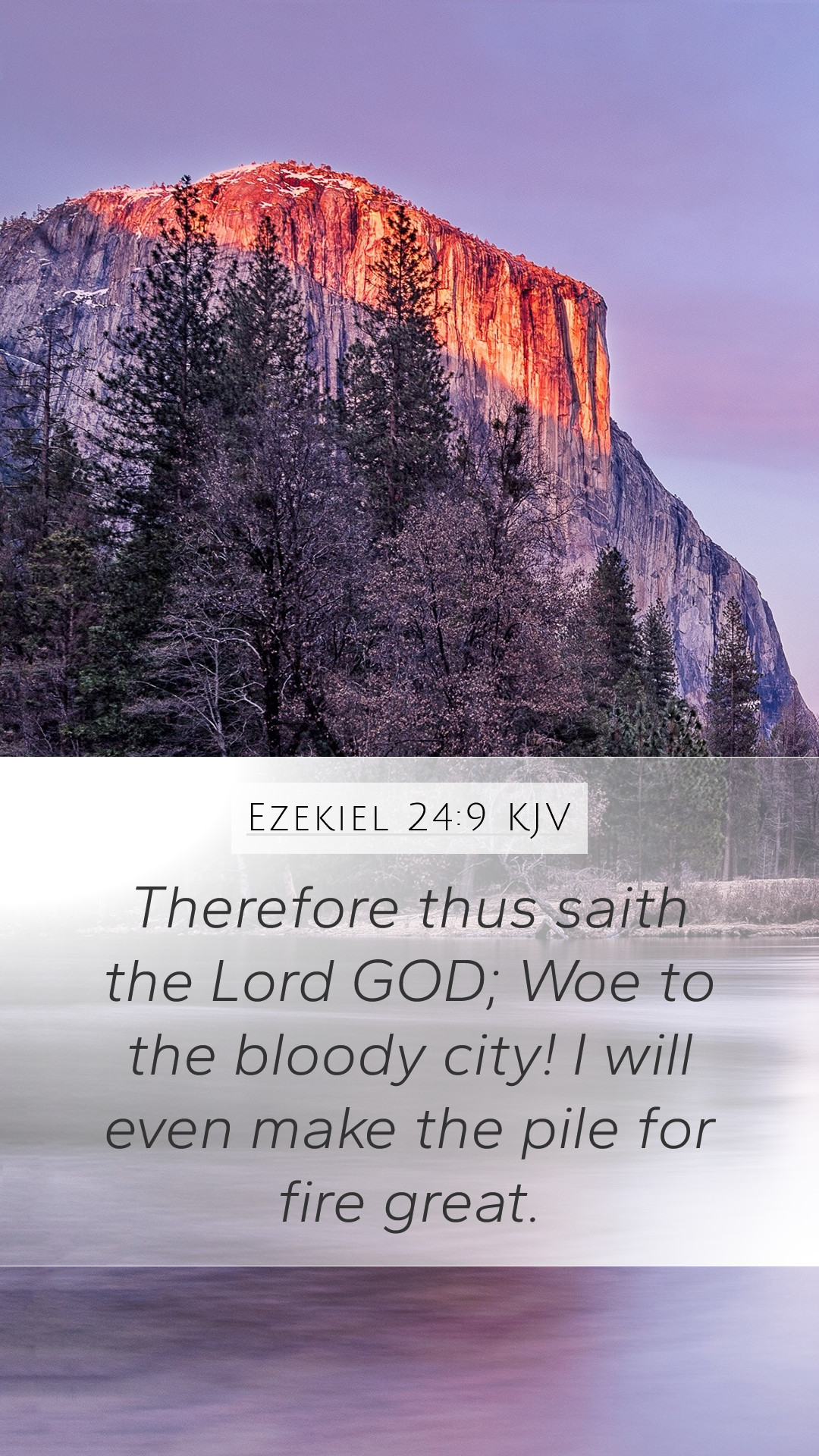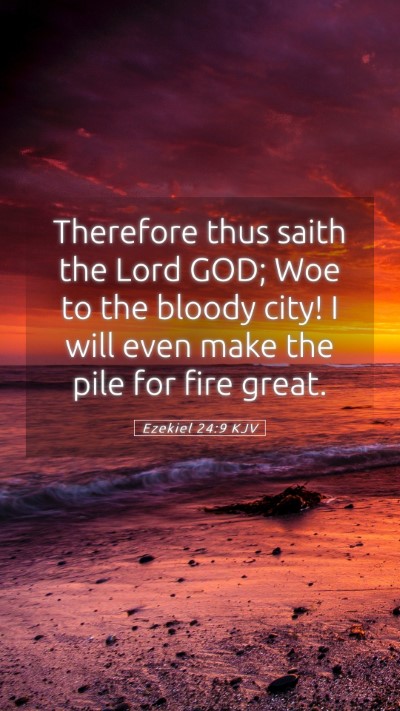Bible Verse Meaning: Ezekiel 24:9
Ezekiel 24:9 states: "Therefore thus says the Lord God: 'Woe to the bloody city! I will even make the pile for fire great.' This verse symbolizes God's impending judgment on Jerusalem, which is often depicted in prophetic literature as a city filled with bloodshed and sin.
Summary and Commentary
The verse is part of a larger oracle concerning the fate of Jerusalem. Here’s a detailed breakdown of its meanings and interpretations based on various public domain commentaries:
-
Matthew Henry's Commentary:
Henry points to the harshness of the judgment being declared upon Jerusalem. He emphasizes that the "bloody city" reflects a place marked by violence and injustice, indicating the severity of God's displeasure with the city. The imagery of a "great pile for fire" suggests complete destruction and a call for repentance among the people.
-
Albert Barnes' Notes:
Barnes explains that Ezekiel’s use of "woe" signifies a strong prophetic denunciation. He connects this lamentation to the consequences of idolatry and moral decay among the people. Furthermore, Barnes highlights the prophetic nature of the verse as a forewarning of the divine retribution that would come upon those who forsake God's statutes.
-
Adam Clarke's Commentary:
Clarke provides an analysis of the metaphorical fire representing purification through judgment. He elucidates that the destruction foretold is both physical and spiritual, aiming not just at the city’s inhabitants but also at the root causes of their sins. Clarke also identifies this verse's resonance with other prophetic themes concerning repentance and judgment.
Key Themes and Insights
- Divine Judgment: The verse underscores the concept of divine retribution, characterized by God's just response to the pervasive violence and disobedience of the people.
- Symbolism of Fire: The "great pile for fire" serves as a metaphor for both destruction and potential purification through suffering—highlighting the severity of the consequences faced by those who stray from righteousness.
- Historical Context: Understanding the context of Jerusalem during Ezekiel's time—marked by bloodshed, corruption, and idolatry—offers critical insights into the gravity of the prophecy.
Related Bible Cross References
- Ezekiel 9:9 - “Then he said to me, ‘The iniquity of the house of Israel and Judah is exceedingly great, and the land is full of bloodshed...’”
- Ezekiel 22:2-3 - “And you, son of man, will you judge, will you judge the bloody city?”
- Isaiah 1:21 - “How the faithful city has become a whore...”
- Lamentations 4:13 - “Because of the sins of her prophets and the iniquities of her priests...”
- Jeremiah 19:6 - “Therefore behold, the days are coming... and they shall bury in Topheth...”
This combination of insights points to the necessity of understanding Scripture within its historical and ethical frameworks, allowing for a deeper comprehension of biblical texts like Ezekiel 24:9. Such study is crucial for anyone seeking Bible study insights, references, and explanations.
Applying Bible Verses to Daily Life
When interpreting Bible verses, it is essential to consider their contemporary relevance. Ezekiel 24:9, while speaking of historical judgment, prompts believers to reflect on justice, morality, and the consequences of communal actions. This approach can guide discussions in Bible study groups, whether in-person or online, fostering understanding and growth.
Conclusion
Overall, the significance of Ezekiel 24:9 transcends its immediate context, encouraging deeper exploration of God’s character and the importance of righteousness. The insights from these commentaries not only enhance our understanding of Scripture but also promote meaningful application in our spiritual lives through various Bible study resources and groups.


